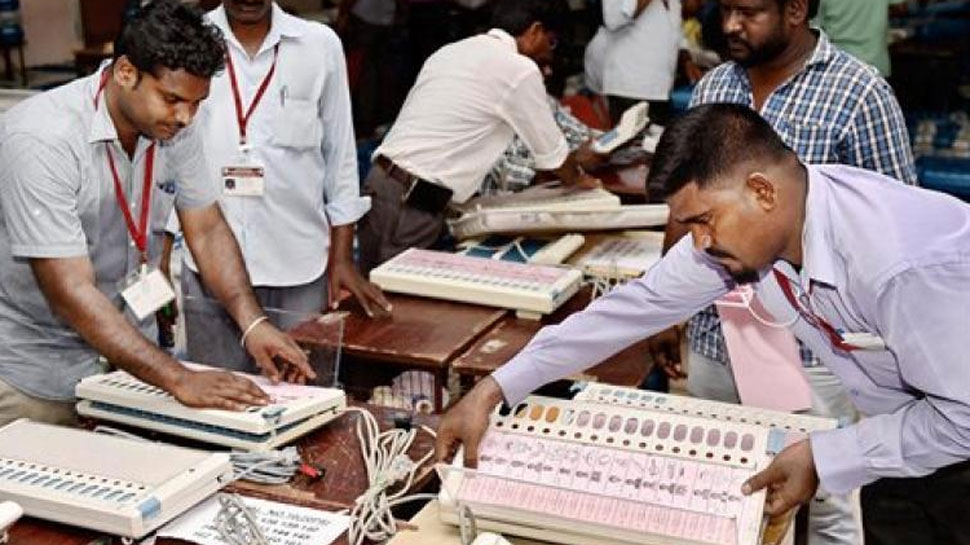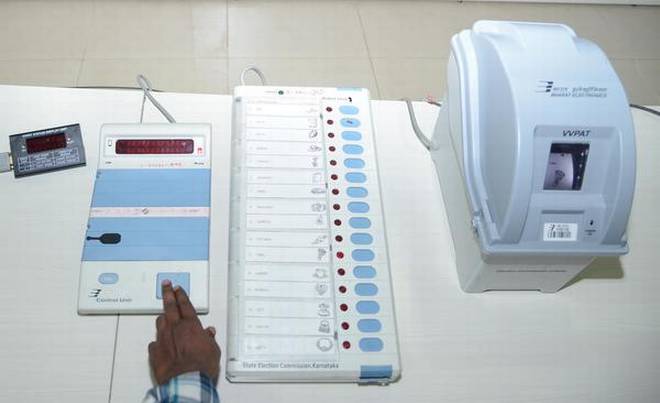With the Lok Sabha and some Vidhan Sabha elections knocking at the door, all of India is busy talking about the procedure of elections ad expected results. The Election Commission has announced the election dates which is going to take place in 7 phases starting from the 11th of April. The final results will be announced on the 23rd of May. The use of EVMs (Electronic Voting Machines) instead of paper ballot has taken place a long time ago however; there are still a number of questions regarding EVMs in the population.
Below are answers to the most Frequently Asked Questions (FAQs) regarding EVMs :
Q1. What is an EVM? How is it different from conventional voting methods?
Ans- As the name suggests, EVM is an electronic device used for voting in elections. It is made up of 2 units namely, a Control Unit and a Balloting Unit, these 2 units are joined by a 5 metre cable. A Presiding Officer or a Polling Officer is in charge of the Control Unit while the Balloting Unit is put inside the voting compartment. A polling Officer is required to release a ballot paper from the Control Unit by pressing the Ballot button available there. This allows the voter to press the blue button on the balloting unit in favour of the candidate or symbol of his/her choice.
Q2. When was EVM first introduced in elections?
Ans-EVMs were used for the first in the 1982 in 7- Parur Assembly Constituency of Kerala.
Q3. Can EVMs work in the absence of electricity?
Ans- EVMs run on ordinary batteries and hence, no electricity is required for the EVMs to work. These batteries are prepared by Electronics Limited/ Electronic Corporation of India Limited.
Q4. What happens when an EVM stops working during election?
Ans- An EVM which stops working is replaced with another one. Also, the votes casted till the EVM was working is kept safe in the memory of Control Unit. One the day of counting, votes from both the Control Units are counted and result in declared combining votes from both of them.
Q5. Who has designed the EVMs?
Ans- The EVMs were designed by the technical committee of EC known as, Technical Experts Committee (TEC). They have devised and designed it in collaboration with two Public Sector Undertakings, Bharat Electronics Limited, Bangalore and Electronic Corporation of India Limited, Hyderabad.
Q6. What is Voter Verifiable Paper Audit Trial (VVPAT)?
Ans-It is an independent system connected with the EVMs which allow voters to check whether their votes were casted as intended or not.
VVPAT prints a slip with the serial number, symbol, and name of the candidate after the vote is casted by the voter. The slip drops inside the sealed VVPAT box after staying in display for around 7 seconds.
Q7. Does VVPAT work on electricity?
Ans- No, just like EVMs, VVPAT work on batteries (power pack batteries).
Q8. Where were VVPAT introduced for the first time in India?
Ans- VVPAT were used for the first time in a by-election held at 51-Noksen (ST) Assembly Constituency of Nagaland.
Q9. How much does it cost to use EVMs? Are they too expensive?
Ans- The price of M2 EVMs manufactured during 2006-10 is Rs. 8670/- each and that if M3 EVMs is tentatively fixed at Rs. 17,000/- each. The initial investment on the EVMs do seem a lot but is a long run, they become cheap when compared to ballot papers.
Q10. Are EVMs tough to use when it comes to illiterate voters?
Ans- To use is easier when compared to conventional methods that is, ballot papers. In EVMs, all a voter needs to do is press the blue button against the name of candidate or symbol of his choice and the vote will be recorded.
Q11. Can EVMs be used simultaneously during both Parliament and State Legislative Assembly elections?
Ans-Yes. But, two different sets of EVMs will be required to conduct and record the votes from these two types of elections.
Q12. Is it possible to vote more than once by pressing the button again and again?
Ans- No. Once the vote has been cast, the EVMs get locked on their own and no matter how many times the blue button is pressed, it would not record any vote further. The next vote is enabled only when the officer in charge of election releases Ballot on clicking the Ballot Button.
Q13. How can a voter be sure that the EVM is working and his vote has been recorded?
Ans- After a voter casts his/her board, the EVM machine glows a bulb next to the candidate who is voted by the voter. The machine also makes a long beep sound thus, assuring the voter audio-visually. Apart from this, EVMs also have VVPAT to provide with assurance to the voters.
Q14. In many areas of the country, there is no electricity connection and even in those places where there is an electricity connection, the power supply is erratic. In this scenario will it not create a problem in storing the machines without air conditioning?
Ans- EVMs do not require air conditioning for safe storage. They only require to be protected from dust, dampness, and rodents just like ballot boxes.
Q15. How can a voter be sure that the EVM is working and his vote has been recorded?
Ans- After a voter casts his/her board, the EVM machine glows a bulb next to the candidate who is voted by the voter. The machine also makes a long beep sound thus, assuring the voter audio-visually. Apart from this, EVMs also have VVPAT to provide with assurance to the voters.
EVMs wonder machines for Indian democracy, here to stay: Former CEC



















